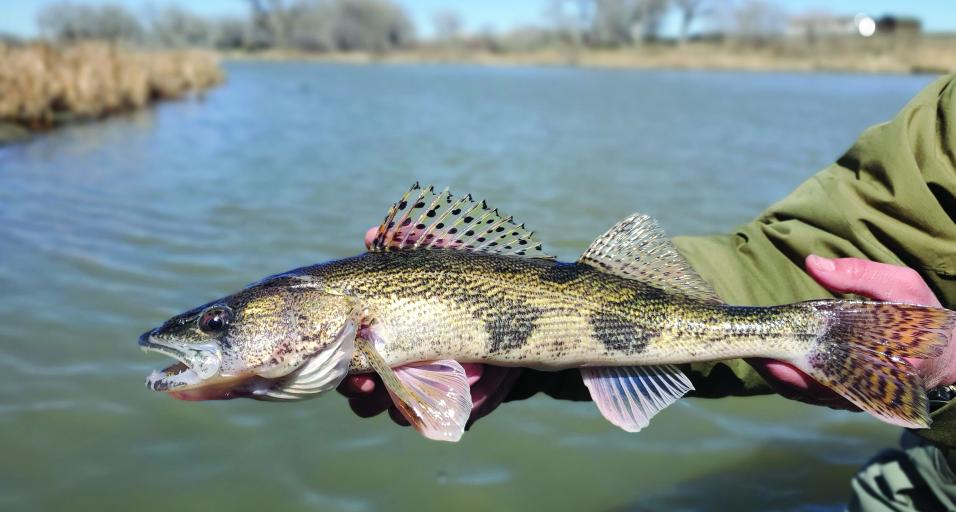In the 1800s, sauger were plentiful in many Wyoming rivers, and this native fish proved to be a vital food source for many — including soldiers.
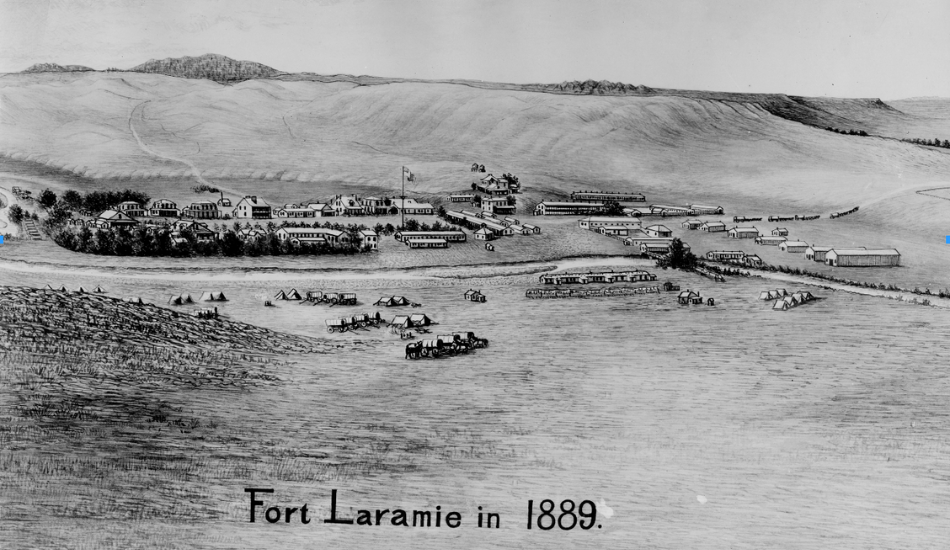
Fort Laramie is best known from 1849-1890 when it served as a military post in the Western Indian Wars. (Photo courtesy of the American Heritage Center)
As Wyoming transitioned from a territory to a state, progress in the form of dams disrupted sauger habitat in the North Platte River — so much that there were no sauger.
However, this predatory fish, which often is mistaken for its cousin the walleye, is making a comeback in the North Platte. It’s too early to deem it a complete success story, but early results are encouraging.
Sauger are still found in portions of the Powder, Wind and Bighorn rivers in Wyoming, along with their major tributaries, and in some of Wyoming’s lakes and reservoirs. For sauger in the North Platte River, it seems fitting they could return in solid numbers to a place where it was such an important part of life more than 150 years ago.
Sauger and soldiers
Fort Laramie in southeast Wyoming is best known from 1849-1890 when it served as a military post in the Western Indian Wars. In spring 1834, Fort William on the Laramie River was established by fur traders as a stockade made from cottonwood logs. In 1841 a replacement structure, Fort John, was built using adobe bricks. In 1849, the U.S. Army bought the structure and established a military post that became officially known as Fort Laramie. The post existed until 1890 and remains the longest continuously occupied Euro-American location in the state.
In 2016, Sarah E. Wolff wrote a dissertation titled, “The Wild West: Archaeological and Historical Investigations of Victorian Culture on the Frontier at Fort Laramie, Wyoming (1849-1890),” as a partial fulfillment for her doctoral degree in philosophy at the University of Arizona.
Wolff wrote that fish were naturally abundant in the region, which included the North Platte and Laramie rivers. The first species mentioned was sauger/walleye, but it was also noted that sauger may have been called different names back then, such as pickerel or pike. Catfish also was a common species caught in and around Fort Laramie at that time.
A soldier at Fort Laramie wrote: “Fish are plenty and easily caught in both the Laramie and Platte rivers, they are mostly catfish and pike.” Evidence that sauger were often referred to as pike include this quote from Fort Laramie post trader John S. Collins: “A few miles above the post on the Platte River [there was] a cataract in the river which was a great fishing place. In season I made frequent trips to this point, usually meeting with great success, taking from 25 to 100 pounds of wall-eyed pike weighing from one to five pounds each.”
The dissertation said officers primarily fished for sauger, while enlisted men fished for catfish. Officers had more leisure time than enlisted men so when it came to fishing they pursued sauger more often because they had more time to catch bait such as grasshoppers, and also to get to the areas of the river that held sauger. Catfish were easier to catch, and enlisted men often set up seines or trot lines in the river, which could be checked throughout the day while they worked.
No more sauger
Fort Laramie was not the only area of the North Platte where sauger were historically found. Nick Hogberg, fisheries biologist for the Wyoming Game and Fish Department, said participants on scientific expeditions throughout the Missouri River basin in the late 1800s in Wyoming, Nebraska, South Dakota and Iowa caught sauger from the North Platte River in Casper and Glenrock.
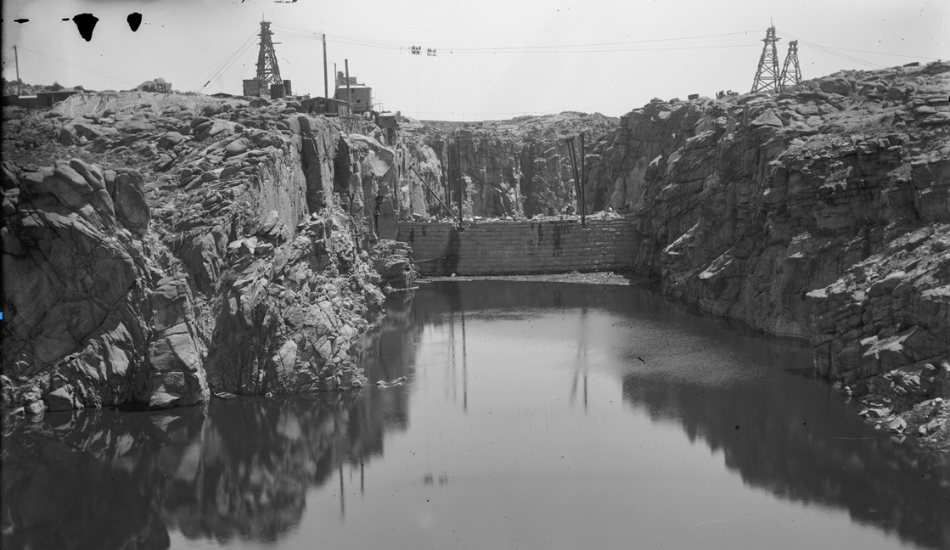
The construction of the Pathfinder Dam was completed in 1909. (Photo courtesy of the American Heritage Center)
Sauger were once common in the North Platte in Wyoming and Nebraska. However, the sauger’s demise started with the completion of Pathfinder Dam in 1909, which changed water flows and temperatures, Hogberg said. Another factor that hurt sauger and portions of the North Platte watershed was the growth of the oil industry, which polluted portions of the river for years through the early to mid-1900s.
Hogberg said Game and Fish’s last documented findings of Sauger in the North Platte River in the 1900s was in 1937 when personnel caught 14 at Bessemer Bend, which is near the current location of the Dan Speas Fish Hatchery. Hogberg said Game and Fish tried to relocate sauger to the river in the 1950s, but none were found.
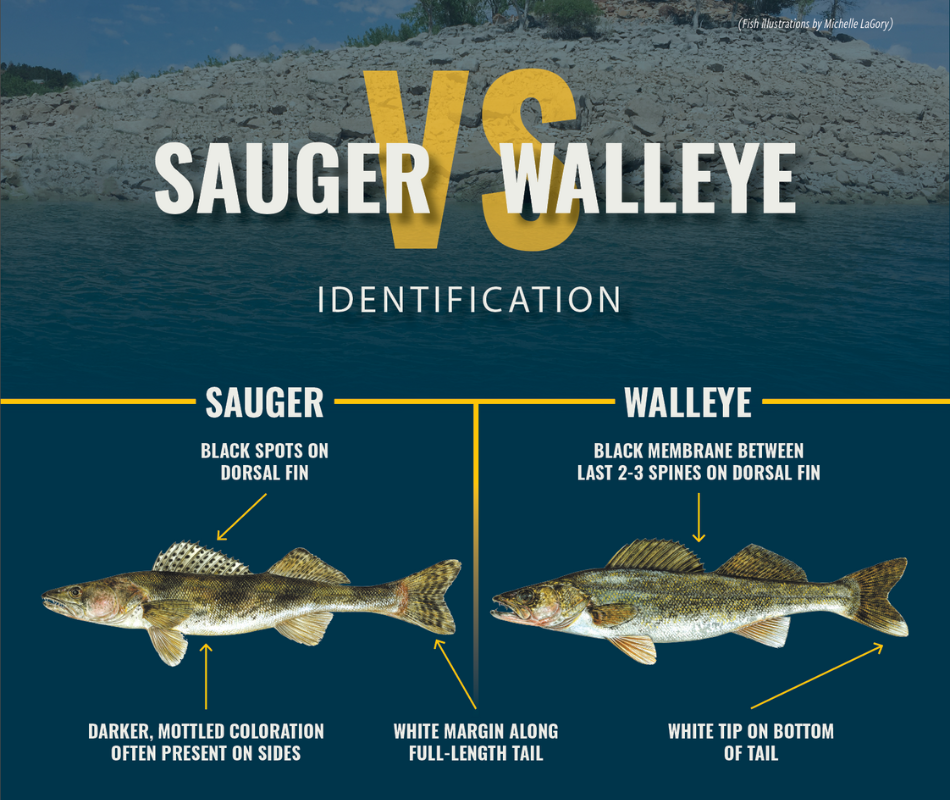
Sauger usually have dark-brown blotches along their back and flanks, and have distinct rows of dark spots on the dorsal fin. Walleye have a white spot on the lower part of their tail, and a dark triangle at the rear base of the dorsal fin.
Walleye prefer cool, clear lakes. Sauger prefer flowing water, but can live in lakes and reservoirs. Walleye can grow larger than sauger. The Wyoming record for sauger is 7.5 pounds, which was caught in 2007 in Boysen Reservoir. The walleye record is 17.4 pounds caught in 1991, also from Boysen Reservoir. Generally, sauger are more slender and torpedo-shaped than walleye.
Both are efficient hunters of fish, crayfish, leeches and sometimes amphibians.
Both have large eyes to aid their hunting in dark or turbid water, but sauger’s vision is more specialized. Sauger are rigged with a more encompassing light-gathering layer, called the tapetum lucidum, on their retinas. This allows the eyes to collect light when the river turns extra sandy or murky.
Sauger and walleye spawn at different times of the year. Walleye spawn first, usually around April in 42-50-degree Fahrenheit water. Sauger generally spawn at slightly warmer water temperatures within weeks after the walleye spawn.
Comeback trail
From 2017-22, Game and Fish reintroduced sauger to the North Platte River. It stocked more than 950,000 fish, which were acquired through trades with neighboring states. The fish were stocked at the PacifiCorp Public Access Area just downstream of the Dave Johnston Power Plant near Glenrock. Hogberg said there are signs of natural reproduction among the sauger.

Wyoming Game and Fish Department fisheries personnel surgically implanted radio tags into 62 sauger planted in the North Platte River near Glenrock. (WGFD photo)
A radio telemetry project began in 2022 to see how the sauger were doing. As of this year, staff surgically implanted radio tags into 62 sauger. Hogberg said biologists can track sauger in the North Platte above Glendo Reservoir using stationary listening stations and equipment on boats. Some sauger have traveled nearly 33 miles upstream from Glendo Reservoir to the town of Douglas before returning to the reservoir by June or July.
“Given where we are with the timeline of this project I don’t think it could be going any better than it is,” Hogberg said. “The first documentation of wild spawning in 2023 was very exciting, and so the outlook is optimistic right now.”
Although sauger like rivers and moving water, they also can live in larger bodies of water, and they seem to be doing well in Glendo Reservoir. Hogberg said there is quality feed in Glendo for sauger and other predatory fish, such as gizzard shad and other small-bodied fishes. He also said sauger could be spawning in the reservoir, although they prefer to spawn in rivers.
Perhaps the telemetry project will shed light on more of these questions. That project will continue through 2025.
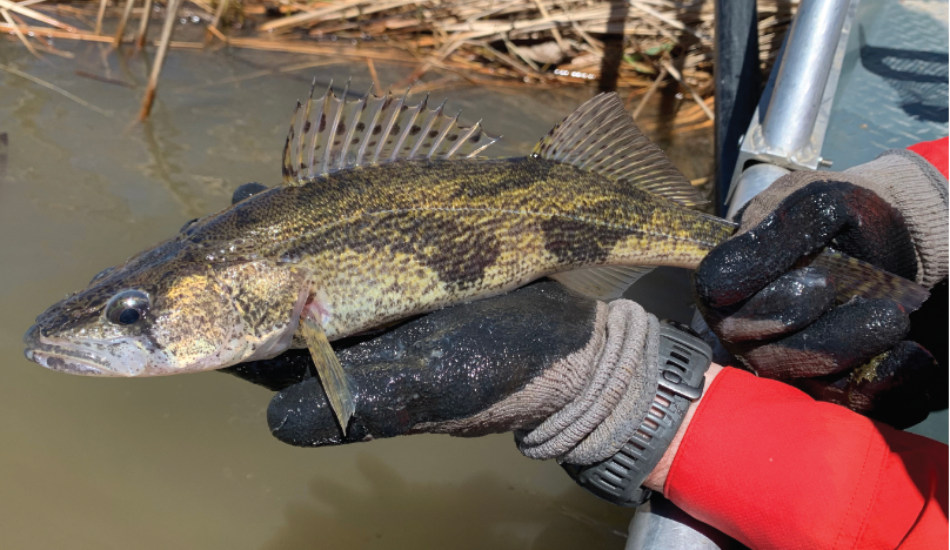
Early data indicates sauger numbers in the North Platte River in the Casper Region are slowly increasing. (WGFD photo)
There are sauger to be caught in Wyoming. The statewide creel limit is two, and in Bighorn Lake downstream from the causeway in Big Horn County, the limit is three. There are regulations on certain waters for walleye and sauger to be kept whole other than the gills and entrails, until the angler is off the water for the day.
Human modifications to the North Platte River have forever changed the fish community and fisheries it can support. However, it appears that sauger are regaining a foothold within their native range. Hogberg said he has received many reports of anglers catching sauger and the fact they are there — and showing signs of surviving and reproducing — gives hope that this native species will complete this comeback.

